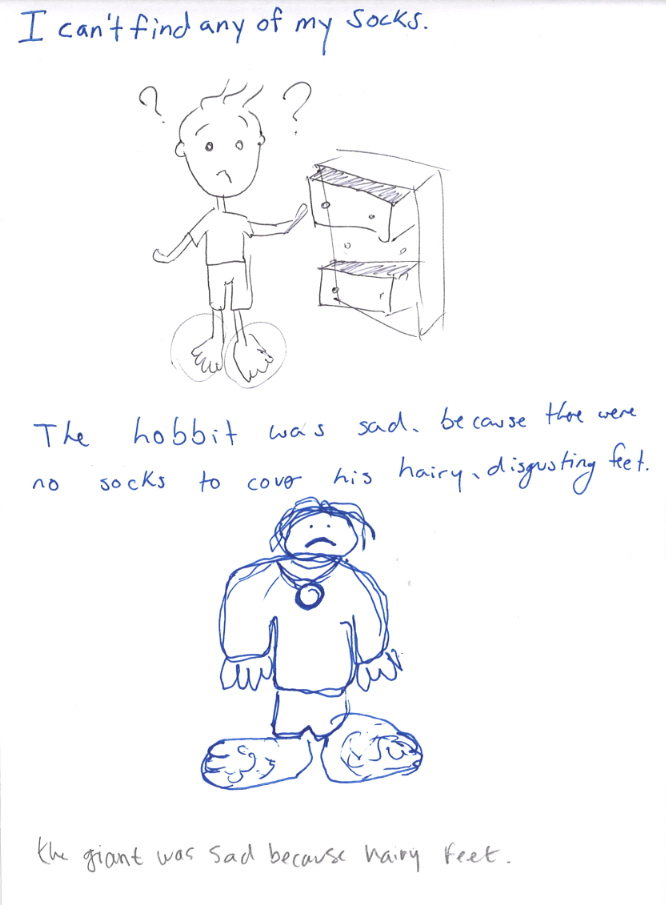This is a version of Chinese Whispers, but the focus is on writing rather than speaking.
Organise students into teams of between 5 and 10, and get the teams to form lines.
Give the person at the back of each team a word written on a piece of paper or card. They need to "write" the word using their finger on the back of the next person in their team - without speaking. They can rewrite it if needed. The 2nd person then writes the word on the back of the next person in the team, and so on till the get to the last person, who writes the word on a piece of paper (or on the board). If it's the right word, and it's spelled correctly (with accents etc if appropriate), the first team to write the word wins (or gets one point). If it's wrong, the team starts over.
For a longer game, count this as one round. The person at the front of the line moves to the back and everyone else shuffles down one place and a new word is given.
Repeat as desired!
This could also be played by "air writing" with the finger (with the 2nd team member turned to face the first, but with the rest of the team still facing away.
Sunday, 27 March 2016
Saturday, 26 March 2016
Foldover - write, read and draw.
Another version of foldover stories - my sister taught me and Miss 7 this last weekend while she was visiting from inter-state and I've already used it with great success in class.
For this version, each student again needs pen & paper. Colour pencils can be useful also.
To start, each person writes a sentence (or, even better, a short paragraph) in the target language. This is passed on to the second person who reads what was written, and has to DRAW it as best they can.
Now, the writing is folded over so that only the picture can be seen, and it is passed on again.
The next person must write what they think the initial sentence (or paragraph) said, based on what is shown in the drawing. Fold over so only the latest writing is visible, and repeat. And repeat again if desired :) You should end with writing rather than a picture. At the end, students compare the first and last versions.

There's a full explanation here. (I found it after I'd typed up the post, and was looking for a picture! Oh well!)
For this version, each student again needs pen & paper. Colour pencils can be useful also.
To start, each person writes a sentence (or, even better, a short paragraph) in the target language. This is passed on to the second person who reads what was written, and has to DRAW it as best they can.
Now, the writing is folded over so that only the picture can be seen, and it is passed on again.
The next person must write what they think the initial sentence (or paragraph) said, based on what is shown in the drawing. Fold over so only the latest writing is visible, and repeat. And repeat again if desired :) You should end with writing rather than a picture. At the end, students compare the first and last versions.

There's a full explanation here. (I found it after I'd typed up the post, and was looking for a picture! Oh well!)
Mini-foldover stories!
This version of foldover stories is much quicker, and can work with students with a smaller vocabulary - so better for younger students or those with less language experience.
I've taken the instructions from ITESLJ, as written by Vicki Konzen.
This is an old favorite.
Give each student a sheet of blank paper. Write the following words on the board in a vertical line: WHO, WHAT, HOW, WHERE, WHEN, WHY.
Explain that everyone will be writing a sentence story.
Write an example on the board, explain, asking for suggestions.
Something I would change is the suggestion to use a classmate's name, as it can end up being (unintentionally or intentionally) mean. I'd let them make up a name, or use a celeb or similar. You can make it more complicated by making it a paragraph rather than one sentence - this is taken from Wikipedia's explanation of the game Consequences
Each person takes a turn choosing a word or phrase for one of eleven questions, in this order.
As an alternative, you could prepare a foldable worksheet or handout for the students to add their responses.
Selamat bermain!
I've taken the instructions from ITESLJ, as written by Vicki Konzen.
This is an old favorite.
Give each student a sheet of blank paper. Write the following words on the board in a vertical line: WHO, WHAT, HOW, WHERE, WHEN, WHY.
Explain that everyone will be writing a sentence story.
Write an example on the board, explain, asking for suggestions.
- Tell them to write someone's name at the top of their paper, i.e., their own, a classmate's, the teacher's, a famous person that everyone knows; fold the paper over once so no one can see it, then pass the paper to the person on their right.
- Write on the received paper what the subject did (suggest funny or outrageous actions), fold it over and pass it on to the right.
- Continue to write one line, how they did it (adverbs), fold and pass; where-pass; when-pass; and last of all, why (because...) and pass it one more time.
- Have the students unfold their stories, and read them silently. Help anyone who cannot read what the others wrote, or doesn't understand.
- Ask one student at a time to read "their" story aloud, or turn the stories in for the teacher to read. Funny!
Something I would change is the suggestion to use a classmate's name, as it can end up being (unintentionally or intentionally) mean. I'd let them make up a name, or use a celeb or similar. You can make it more complicated by making it a paragraph rather than one sentence - this is taken from Wikipedia's explanation of the game Consequences
Each person takes a turn choosing a word or phrase for one of eleven questions, in this order.
- Adjective for man
- Man's name
- Adjective for woman
- Woman's name
- Where they met
- He wore
- She wore
- He said to her
- She said to him
- The consequence was… (a description of what happened after)
- What the world said
As an alternative, you could prepare a foldable worksheet or handout for the students to add their responses.
Selamat bermain!
Fold-over stories
Please forgive me if I've written about this before - I've had a quick search & couldn't find it so thought I'd add it :)
I use fold-over stories regularly with my Year 11 class to get them focusing on conjunctions, story-writing, character descriptions and general extending writing techniques.
Each student will need a pen or pencil and a sheet of lined paper. I like to get the students sitting in a circle to make passing things on easier, but they do need to be at a desk or have something to lean on while writing.
Firstly, each student writes the start of a story on their page, then they fold it over so that only the last line can be seen. (This could be as few as one word, or 3 or 4 words, or a whole line if you prefer.) I ask that the students end mid-sentence.
Once they have folded the page over to hide most of what they have written, they pass it on to the person to their left, who now has to write the next part of the story without knowing what has come before. They write a sentence to continue the story (or a few sentences - up to you to decide how much you ask them to write!), then fold it so only the last line is visible and pass it to their left.
This keeps going until the end of the page (or when you decide to finish the activity). The student now writes the ending of the story folds it over and passes it on one more time.
When everyone has finished, the students unfold the story and read it quietly - you can help with understanding as necessary. Ask for some volunteers to read or translate (or read and translate) the story, or perhaps ask for some great examples for you to read & translate to the class. Make sure that you leave time for this, as the stories are nonsensical and often very funny - and it's great to have students really trying to comprehend and collaborating to understand like they do with this activity.
I get the students to rewrite the story correcting any spelling or grammatical errors they notice in the story that they have ended up with for homework as an extra activity (both to practice grammar & spelling, and to encourage them to focus on spelling and grammar as they write), but then I'm mean like that ;) They don't write their name on it at any point, so the mistakes are somewhat anonymous.
This can be done in small to medium groups sitting in a circle, or as a whole class :)
I use fold-over stories regularly with my Year 11 class to get them focusing on conjunctions, story-writing, character descriptions and general extending writing techniques.
Each student will need a pen or pencil and a sheet of lined paper. I like to get the students sitting in a circle to make passing things on easier, but they do need to be at a desk or have something to lean on while writing.
Firstly, each student writes the start of a story on their page, then they fold it over so that only the last line can be seen. (This could be as few as one word, or 3 or 4 words, or a whole line if you prefer.) I ask that the students end mid-sentence.
Once they have folded the page over to hide most of what they have written, they pass it on to the person to their left, who now has to write the next part of the story without knowing what has come before. They write a sentence to continue the story (or a few sentences - up to you to decide how much you ask them to write!), then fold it so only the last line is visible and pass it to their left.
This keeps going until the end of the page (or when you decide to finish the activity). The student now writes the ending of the story folds it over and passes it on one more time.
When everyone has finished, the students unfold the story and read it quietly - you can help with understanding as necessary. Ask for some volunteers to read or translate (or read and translate) the story, or perhaps ask for some great examples for you to read & translate to the class. Make sure that you leave time for this, as the stories are nonsensical and often very funny - and it's great to have students really trying to comprehend and collaborating to understand like they do with this activity.
I get the students to rewrite the story correcting any spelling or grammatical errors they notice in the story that they have ended up with for homework as an extra activity (both to practice grammar & spelling, and to encourage them to focus on spelling and grammar as they write), but then I'm mean like that ;) They don't write their name on it at any point, so the mistakes are somewhat anonymous.
This can be done in small to medium groups sitting in a circle, or as a whole class :)
Subscribe to:
Posts (Atom)




